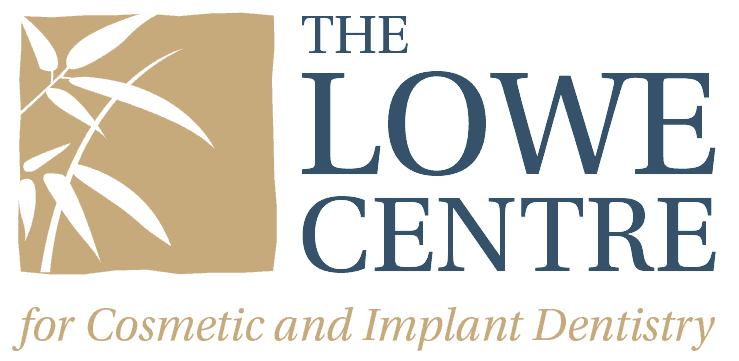
What is Dental Bonding?
Here at The Lowe Centre we specialize in all things Cosmetic and Implant Dentistry. Dr. Ed Lowe has been practicing his artful talent for smile transformation for more than 30 years. Among our specialties is dental bonding or tooth-coloured fillings. We’ll explore these in depth in today’s blog!
Dental bonding is a cosmetic dental procedure that involves the application of a tooth-coloured resin material to the surface of a tooth. The resin is bonded to the tooth using a special adhesive and then shaped and polished to match the surrounding teeth. Dental bonding can be used to repair a chipped or cracked tooth, close gaps between teeth, change the shape or colour of a tooth, or to cover exposed tooth roots due to gum recession.
The procedure is relatively quick and painless and can usually be completed in one visit to the dentist. After the resin has been applied, it is hardened with a special light, and then the dentist will shape and polish the tooth to achieve a natural-looking result. Bonding is a less invasive and less expensive alternative to other cosmetic treatments, such as veneers or crowns, and is often used for minor cosmetic issues or as a temporary fix until a more permanent solution can be done.
Who Is an Ideal Candidate for Dental Bonding?
Dental bonding is a versatile and affordable cosmetic dental procedure that can help improve the appearance of many different dental issues. However, it may not be the best choice for everyone.
The ideal candidate for dental bonding is someone who has:
Minor cosmetic imperfections: Dental bonding works best for minor cosmetic issues such as small chips, cracks, gaps, or discolourations.
Good oral health: The patient must have healthy teeth and gums before undergoing bonding. Any underlying dental issues such as cavities or gum disease must be treated before the procedure.
Sufficient tooth structure: There must be enough healthy tooth structure remaining to support the bonding material.
Realistic expectations: Patients must have realistic expectations about the outcome of the procedure. Bonding can improve the appearance of the tooth, but it may not be able to completely restore its original shape, size, or colour.
Commitment to oral hygiene: Good oral hygiene is essential for maintaining the results of dental bonding. Patients must commit to brushing and flossing regularly and attending regular dental checkups and cleanings.
Our experienced team at The Lowe Centre for Cosmetic and Implant Dentistry can determine if you are a good candidate for dental bonding after a thorough dental examination and consultation.
What Is the Difference Between Veneers and Dental Bonding?
Veneers and dental bonding are both cosmetic dental procedures that can improve the appearance of teeth. However, they differ in several ways:
Material: Veneers are typically made of porcelain or ceramic, while dental bonding uses a tooth-coloured resin material.
Durability: Veneers are generally more durable than dental bonding and can last for 10-15 years or more with proper care. Bonding is less durable and may need to be replaced more frequently.
Preparation: Veneers require some tooth preparation, as a thin layer of enamel must be removed to make room for the veneer. Bonding usually does not require any preparation.
Cost: Veneers are generally more expensive than bonding, as they require more extensive laboratory work and preparation.
Appearance: Veneers can provide a more natural and lifelike appearance, as they can be customized to match the colour, shape, and size of the surrounding teeth. Bonding may not provide the same level of customization or natural appearance.
Purpose: Veneers are typically used for more extensive cosmetic issues such as severely discoloured or misaligned teeth, while bonding is often used for more minor cosmetic issues such as small chips or gaps.
What Is the Procedure for Dental Bonding?
The dental bonding procedure typically involves the following steps:
Preparation: Your dentist will first clean the tooth and choose a shade of composite resin that matches the colour of your natural teeth.
Conditioning: The surface of the tooth is roughened and a conditioning liquid is applied to help the bonding material adhere to the tooth.
Bonding: The dentist will apply the composite resin to the tooth and shape it to match the surrounding teeth.
Curing: The bonding material is hardened using a special light.
Trimming and shaping: Once the bonding material is hardened, the dentist will trim and shape it to the desired shape and size.
Polishing: Finally, the dentist will polish the bonding material to match the shine and texture of the surrounding teeth.
The entire procedure usually takes about 30 to 60 minutes per tooth, depending on the extent of the bonding required. Local anesthesia is generally not needed unless the bonding is being used to fill a decayed or damaged tooth.
After the procedure, it is recommended to avoid eating or drinking anything that can stain the teeth, such as coffee, tea, or red wine, for the first 48 hours. Good oral hygiene practices, such as brushing and flossing regularly, are also important for maintaining the longevity of the bonding material.
Is Dental Bonding Painful?
During the procedure, you may feel some pressure or discomfort as the dentist prepares the tooth and applies the bonding material. However, the process is generally quick and straightforward and should not cause any significant pain. Most patients do not require anesthesia unless the bonding is being used to fill a cavity or repair a damaged tooth.
After the procedure, you may experience some sensitivity to hot and cold temperatures or mild discomfort for a few days as your tooth adjusts to the new bonding material. This is normal and can be managed with over-the-counter pain medications or by using sensitivity toothpaste.
If you experience severe pain, swelling, or discomfort after the procedure, it is important to contact your dentist immediately as it could be a sign of an underlying issue such as an infection or a poorly fitting bonding material.
Is Dental Bonding Right for You?
At The Lowe Centre for Cosmetic and Implant Dentistry, we specialize in smile design. Dental bonding might be one of several procedures required to meet your dental health and smile design goals.
Book a 15-minute virtual consultation today to find out if you are a candidate for bonding: https://www.mysmilemakeover.com/.
Dr. Ed Lowe
The Lowe Centre for Cosmetic and Implant Dentistry
